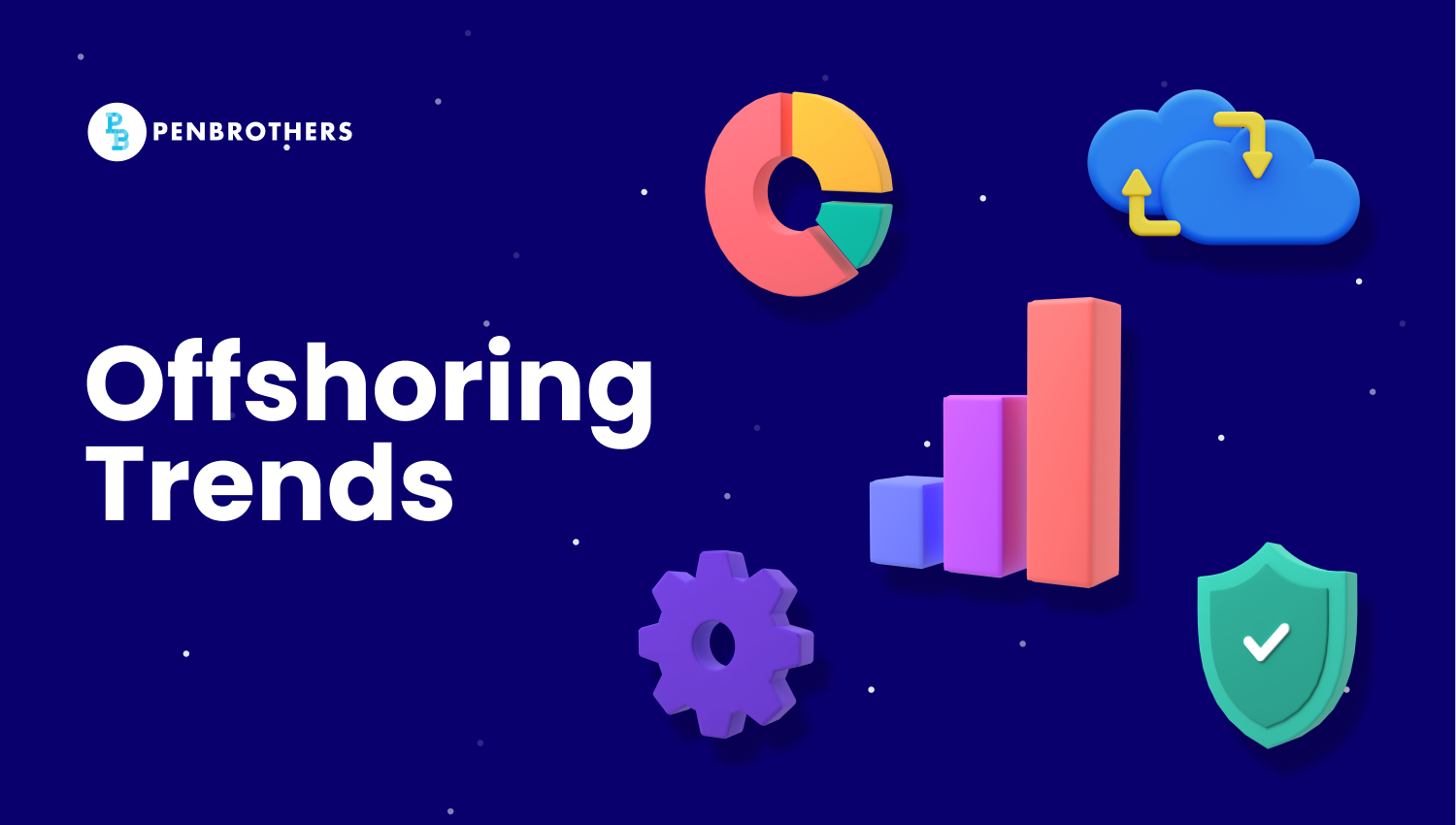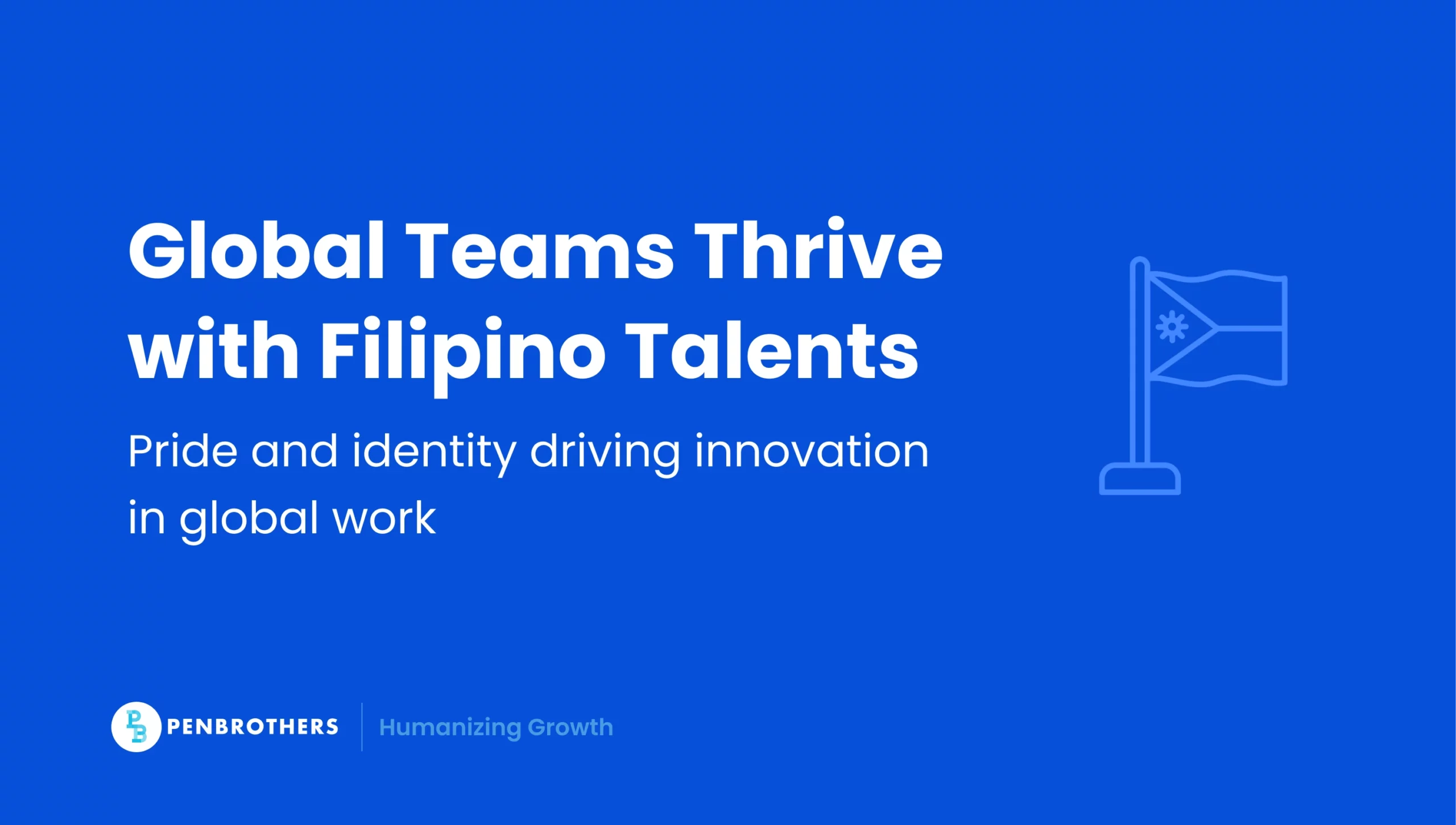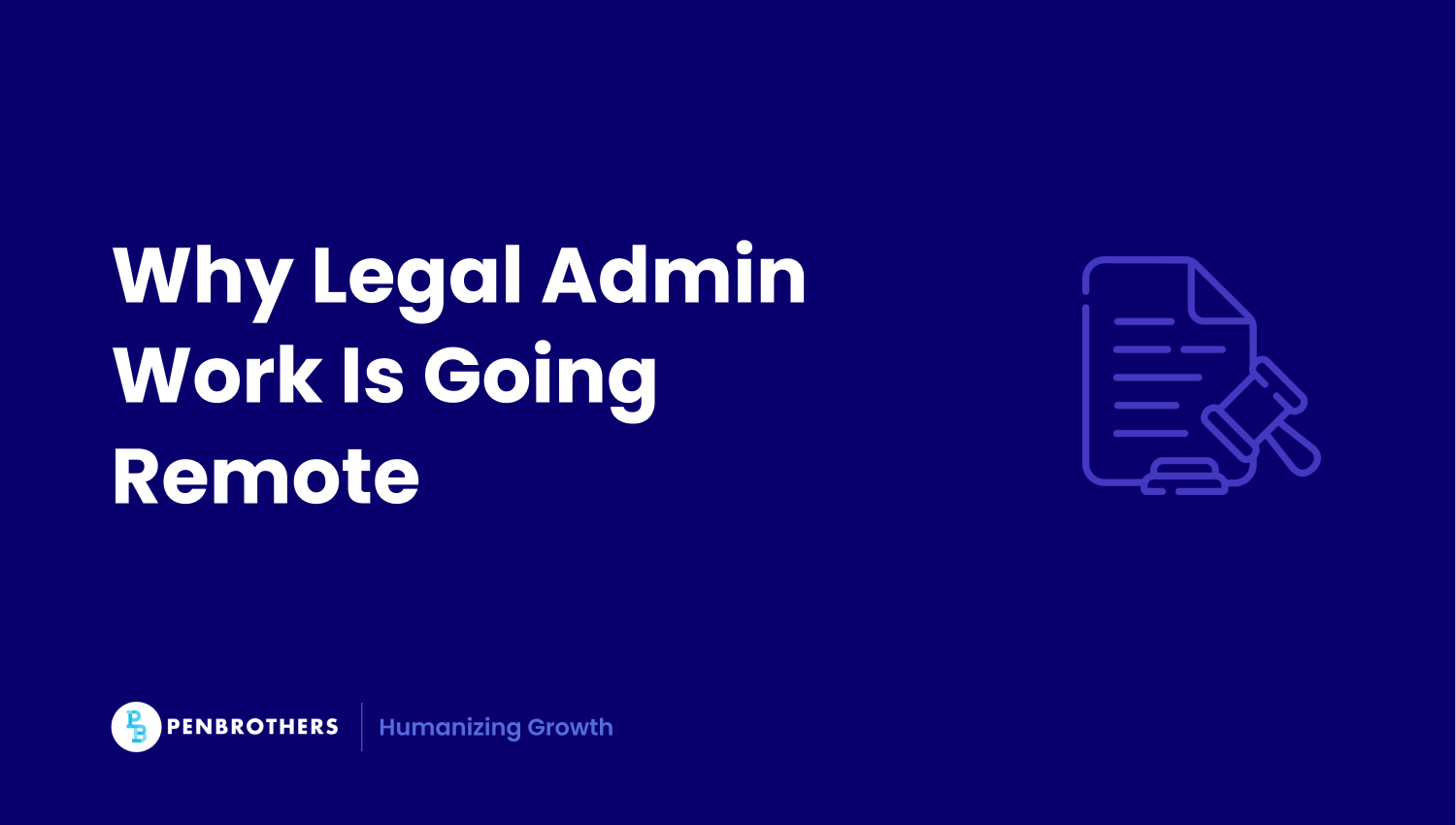What's Inside?
Offshore Staffing Trends 2025: Balancing Talent, Technology, and Risk

The CFO stares at the quarterly forecast, the CHRO flips through a stack of unfilled requisitions, and the CTO pulls up an AI roadmap that needs shipping yesterday. Nobody’s talking, not because they disagree, but because everyone knows the decision isn’t whether to go offshore anymore. The question is how to build a distributed workforce that actually works: one that balances cost, talent access, and the kind of risks that keep executives awake at night.
This is the reality of offshore staffing trends in 2025. What started as a cost-cutting exercise has evolved into something far more strategic: a necessity for survival and growth in an economy where talent is scarce and competition is global.
Key Takeaways
- A Strategic Balance of Talent, Technology, and Risk: Offshore staffing in 2025 is no longer a simple cost-saving exercise. It is a complex strategic discipline that requires executives to balance three key pillars: accessing scarce global talent, leveraging transformative technology like AI, and managing an increasing array of geopolitical, security, and human capital risks.
- The Primary Driver Has Shifted from Cost to Talent Access: The main motivation for offshoring has fundamentally changed. Due to a massive global skills shortage, the primary goal for most companies is now accessing specialized capabilities and high-value Knowledge Process Outsourcing (KPO) that are unavailable or unaffordable in their local markets.
- Risk Management and Resilience are Now Paramount: The modern approach to offshoring prioritizes operational resilience. This means companies are moving away from single-country dependencies and adopting multi-hub or nearshore models to mitigate geopolitical risks. Cybersecurity and compliance have also become top criteria for partner selection.
- Operating Models are Evolving Toward Specialization and Partnership: The old generalist BPO model is declining. The future of offshore staffing lies with specialized, industry-specific providers and more flexible engagement models like staff augmentation. The most successful relationships are structured as long-term strategic partnerships focused on building capabilities, not as transactional vendor agreements.
Why Offshore Staffing Trends Matter in 2025
Here’s the thing about offshoring today: it’s not your father’s labor arbitrage play anymore. The Business Process Outsourcing (BPO) market—a core component of offshore staffing—is projected to hit $415.73 billion in 2025, and executive priorities have fundamentally shifted. We’re no longer talking about moving work to save money. We’re talking about accessing capabilities that don’t exist locally and building resilience into operations that can weather any storm.
The conversation has moved from “if” to “how.” Specifically, how to engineer a multi-hub operating model that can absorb shocks, accelerate delivery, and compound capability over time.
The Talent Imperative
The Global War for Talent
By 2030, the global shortage of skilled workers could reach 85 million people. That represents $8.5 trillion in unrealized annual revenue sitting on the table. Think about that for a moment. The talent you can’t find locally isn’t just slowing growth; it’s literally costing the global economy trillions.
Offshoring has become a way to borrow the talent you can’t buy. It’s strategic arbitrage in the purest sense.
Executives increasingly cite improved access to talent, not just cost reduction, as the primary motivation to outsource. As Carlo Lim, Penbrothers’ COO, puts it:
“Smart companies are looking beyond labor arbitrage to competitive advantage. They are asking not just ‘How much can we save?,’ but ‘How can we access talent we can’t find anywhere else?’”
Knowledge Process Outsourcing on the Rise
The work being moved offshore tells the story. The global Knowledge Process Outsourcing (KPO) market is exploding, projected to grow at a compound annual growth rate of nearly 17% through 2030. We’re talking about analytics, R&D, finance, legal work, the kind of strategic functions that directly impact competitive advantage.
This isn’t about moving call centers anymore. Offshore partners are increasingly responsible for core, high-value work that requires deep expertise and strategic thinking.
The Technology Factor
AI-Powered Workforce
AI is the single most disruptive force in offshoring, and anyone pretending otherwise is living in the past. Spending tied to AI in outsourced delivery is surging, with Gartner predicting that by 2026, over 70% of enterprises will be using Generative AI in production environments. This is a fundamental shift from human-assisted processes to outcome-based operations.
The shift is creating fresh demand for AI and data talent across offshore hubs. Countries that can’t develop this capability are going to find themselves left behind.
Technology-Enabled Customer Experience
By 2025, the mainstream customer experience stack is AI-first and self-service-led. This pushes offshoring into new value areas like hyper-personalization, advanced analytics, and omnichannel orchestration. The old model of offshore customer service is evolving into something far more sophisticated.
The Risk Equation
Geopolitical and Economic Risks
Tariffs, regional instability, and strategic competition are raising the cost and complexity of putting all your eggs in one geographic basket. Smart companies are adopting multi-hub and nearshore diversification strategies to reduce exposure.
The era of massive captive centers in single countries is giving way to distributed networks designed for resilience, not just efficiency.
Cybersecurity and Compliance
Data security and cross-border compliance are now board-level issues. According to IBM’s latest report, the average cost of a single data breach has reached an all-time high of $4.45 million, with most companies now screening partners through a cybersecurity lens before even considering their capabilities.
This isn’t optional anymore. It’s table stakes.
Financial and Hidden Costs
A narrow focus on labor arbitrage masks the total cost of ownership. Transition periods can temporarily double delivery costs. Distributed governance adds about 15 to 20 percent management overhead. Secure technology stacks raise costs by a similar margin.
The companies that succeed think in total cost of ownership, not just hourly rates.
Human Capital Risks
Cultural friction, weak onboarding, and unclear career paths can erode ROI faster than any technology failure. As Nicolas Bivero, Penbrothers’ CEO, puts it:
“Most companies think onboarding is about orientation and paperwork. That is not onboarding. That is just administration.”
Treating onboarding as relationship building raises success rates and protects investments.
Offshore Destinations in Flux
Established Hubs
India remains the planet’s IT scale engine, with deep engineering benches and mature delivery models. The challenge? Competition for talent in top cities can drive up attrition and costs.
The Philippines is evolving from a customer experience powerhouse to a strategic partner, backed by a national AI-aligned roadmap and strong English proficiency. The industry’s IBPAP 2028 Roadmap, developed in partnership with the government, is a coordinated national strategy to move up the value chain.
High-Growth Challengers
Vietnam is scaling fastest on IT and product engineering, with attractive developer economics and a young talent pool eager to prove itself on the global stage.
Poland offers EU-grade compliance, high-quality talent, and proximity to Western Europe. For companies dealing with GDPR and data protection regulations, the regulatory alignment alone is worth the premium.
Mexico anchors nearshoring to the United States with strong time zone overlap and cultural affinity that makes collaboration seamless.
Emerging Frontiers
Latin America beyond Mexico, South Africa, Egypt, and Kenya are rising as part of multi-hub resilience strategies that blend offshore and nearshore coverage. These aren’t just cost plays—they’re strategic bets on geographic diversification.
New Operating Models
BPO 2.0
Clients are unbundling processes and choosing best-in-class specialists by vertical. Majority of companies that outsource now prefer providers with industry-specific expertise. This is elevating entirely new roles: workforce management analysts, AI ethics officers, multilingual quality assurance auditors.
The generalist BPO model is dying (or, at least becoming a tougher sell). Specialized, niche providers are the future.
Staff Augmentation and Hybrid Models
Staff augmentation is surging in uncertain markets because it provides on-demand skills with managerial control. Instead of handing over entire functions, companies are integrating external professionals directly into existing teams.
Hybrid onshore-offshore squads and flexible work policies are becoming the default, not the exception.
Strategic Partnership Models
The Build-Operate-Transform-Transfer (BOTT) model is gaining ground as executives trade vendor relationships for capability partnerships. Case evidence shows meaningful productivity improvements and stronger controls when organizations adopt partnership-style arrangements versus transactional contracts.
Balancing Act for the C-Suite
CEO
Your job is to codify a multi-hub vision that treats offshore staffing as what it really is: a growth enabler and a hedge against volatility, not a single-country cost play.
The thing is, offshoring decisions have moved from operational tactics to strategic imperatives. You need to champion the mindset shift away from “How much can we save?” toward “How can we access capabilities that don’t exist locally?” You make these decision not just to save money, but to scale globally, access specialized talent, and build operational efficiency that your competitors can’t match.
So start with the vision. Your leadership team needs to understand that distributed talent is a strategic necessity, not a procurement decision. Frame it as competitive advantage, because that’s exactly what it is.
CFO
Adopting a Total Cost of Ownership model that captures the hidden costs everyone else ignores. Those 15-20% management overhead expenses? The temporary doubling of delivery costs during transitions? The enhanced cybersecurity requirements? Factor them all in.
But don’t stop there. You need to quantify geopolitical scenarios: what happens if tariffs shift, if regulatory frameworks change, if your primary offshore location becomes unstable? Build financial models that account for these risks so you’re making decisions with complete information, not just spreadsheet fantasies.
The smart play? Sponsor AI investment that compresses both cost and risk simultaneously. Companies that get this right see measurable ROI from AI implementation in offshore operations within the first year.
CHRO
You’re leading the most complex transformation: building a truly global talent strategy that works across cultures, time zones, and legal frameworks.
The core issue is this: distributed teams fail because of human capital challenges, not technical ones. Cultural friction, weak onboarding, and unclear career paths erode ROI faster than any technology failure. You need to operationalize cultural integration, not just talk about it.
Lead AI upskilling across your entire distributed workforce. The companies that win will be those that prepare both onshore and offshore teams for AI-augmented collaboration. Standardize virtual onboarding that treats relationship building as seriously as paperwork processing. The goal isn’t orientation—it’s integration.
Right now, most organizations lose offshore talent within the first 90 days because they treat onboarding as administration instead of relationship building. Fix that, and you’ll see retention rates that make your CFO very happy.
Offshore Staffing as a Strategic Balance
Offshore staffing trends in 2025 are defined by the intersection of talent, technology, and risk. The winners will design right-shoring portfolios that optimize across offshore, nearshore, and onshore options, then operationalize with specialized partners, agentic AI, and disciplined total cost models.
If you want offshore teams that actually work, build them with rigor. As Carlo Lim puts it: the goal isn’t a cheaper team—it’s a better one that you couldn’t assemble locally.
The future belongs to companies that master the art of global team building. The question isn’t whether you’ll need distributed talent. The question is whether you’ll build that capability before your competitors do.
So where do you start? If you’re ready to move beyond the offshore staffing challenges that have held your organization back, let’s talk about building teams that actually work. The right strategy, the right partners, and the right framework can turn offshore staffing from a cost center into your competitive advantage.
Ready to build offshore teams that deliver? Start here.
Frequently Asked Questions
The main trends are a shift in focus from cost-cutting to accessing scarce global talent, the deep integration of Artificial Intelligence (AI) and automation into workflows, and a much greater emphasis on managing geopolitical, cybersecurity, and human capital risks.
KPO is the outsourcing of high-value, knowledge-intensive work, such as financial analysis, research and development, and advanced legal services. It is growing rapidly because companies are increasingly using offshore partners to access specialized expertise and strategic capabilities, not just to handle routine, transactional tasks.
Companies are diversifying their offshore locations to build resilience and reduce their risk exposure. Relying on a single country creates a vulnerability to localized disruptions, such as political instability, regulatory changes, or natural disasters. A multi-hub strategy helps ensure business continuity.
The TCO is the complete and true cost of an offshore partnership, which goes far beyond the basic hourly or monthly labor rate. It includes often-overlooked hidden costs such as the management overhead required to oversee the team (which can be 15-20%), transition and setup costs, and the necessary investment in technology and security.
AI is primarily amplifying the capabilities of offshore teams rather than replacing them. It is automating the most routine and repetitive tasks, which in turn shifts the demand for offshore talent toward more complex, higher-value work. This includes managing AI systems, performing advanced data analysis, and handling exceptions that require human judgment and problem-solving.




